Image
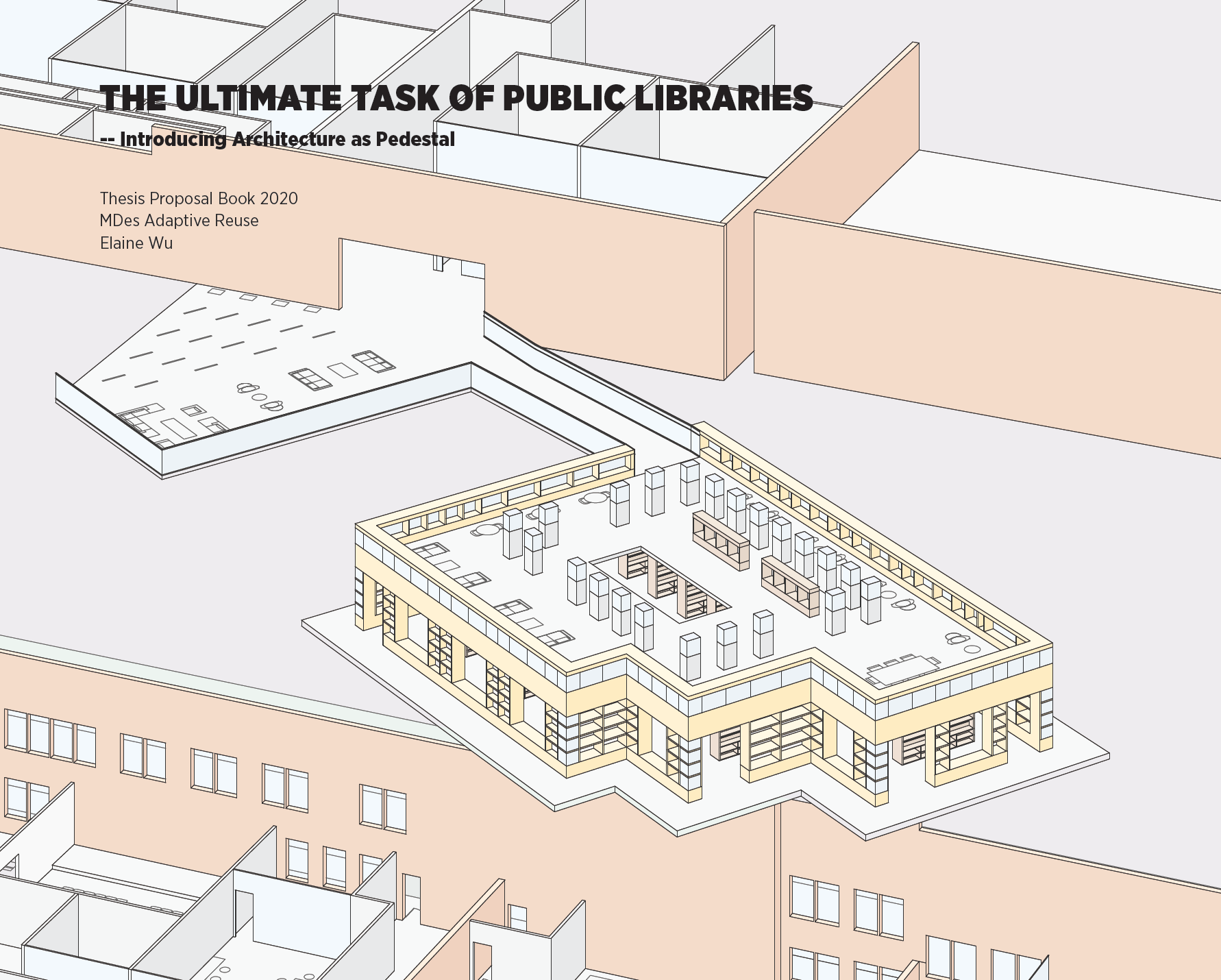
ELAINE WU
THE ULTIMATE TASK OF PUBLIC LIBRARIES
-- Introducing Architecture as Pedestal
Image
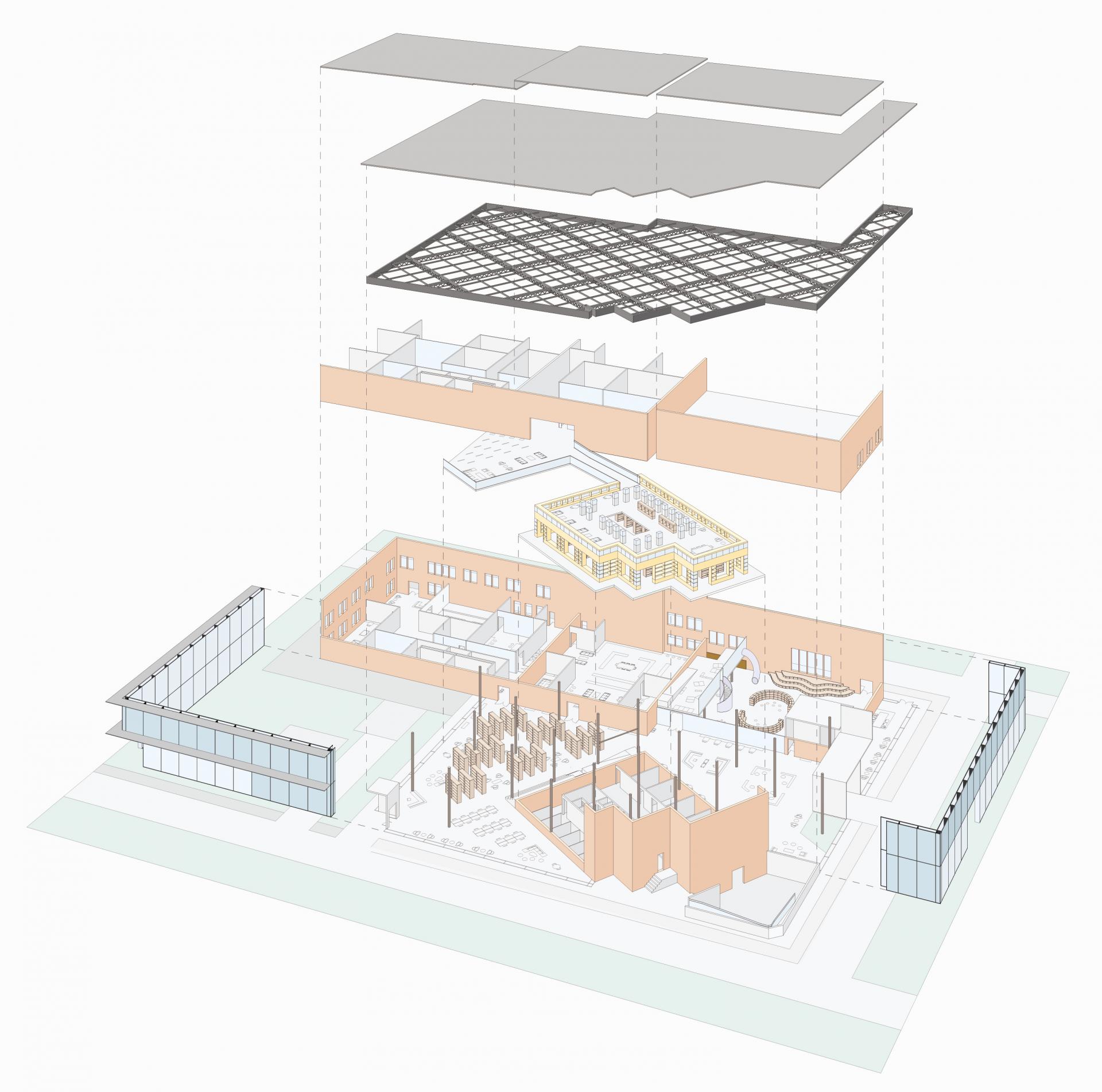
Abstract
Most cultural institutions are housed in one of two kinds of architecture: either to show off the structure or building style or to appreciate the preciousness and identity of the object(s) it contains. The first kind focuses more on the architecture itself, and its function is not defined by the outside appearance. For the second kind, the architecture aims to serve as a support or pedestal, where the form is a result of needs based on different objects contained.
For libraries, architecture should never be the protagonist. Libraries should champion the aura of books, just as museums exhibit their collections. Physical books are not only the media for knowledge, but also nourishment for the mind and witness of history -- they are pieces of art. As a facility that curates collections of both physical and digital resources, it is the library’s mission to make people aware of the greatness of physical books and create spaces for the appreciation of books. Even in the future when technology continues to develop, physical books must still be the one thing that we never abandon, and public libraries are responsible for being at the forefront of defense. Libraries should not simply place books on monotonous shelves; instead, they should be carefully designed to relate back to the essence of the objects within.
The role of the building should define its form. It is not the meaning of the architecture to show off hierarchy or make a broad statement. Instead, architecture should support its contents, in this case physical books, providing spaces that amplify the beauty of the analog, and awaken the ritual of reading. These ideas are demonstrated through intervention within the Fox Point Library of Providence, RI, where a rotated piece of existing building is transformed into a “book mountain”, emphasizing its specialness and hierarchy. Reading lounges and community areas are largely expanded, providing comfortable spaces with natural light and open views.
Project Site: 90 Ives Street, Providence, Rhode Island
Image
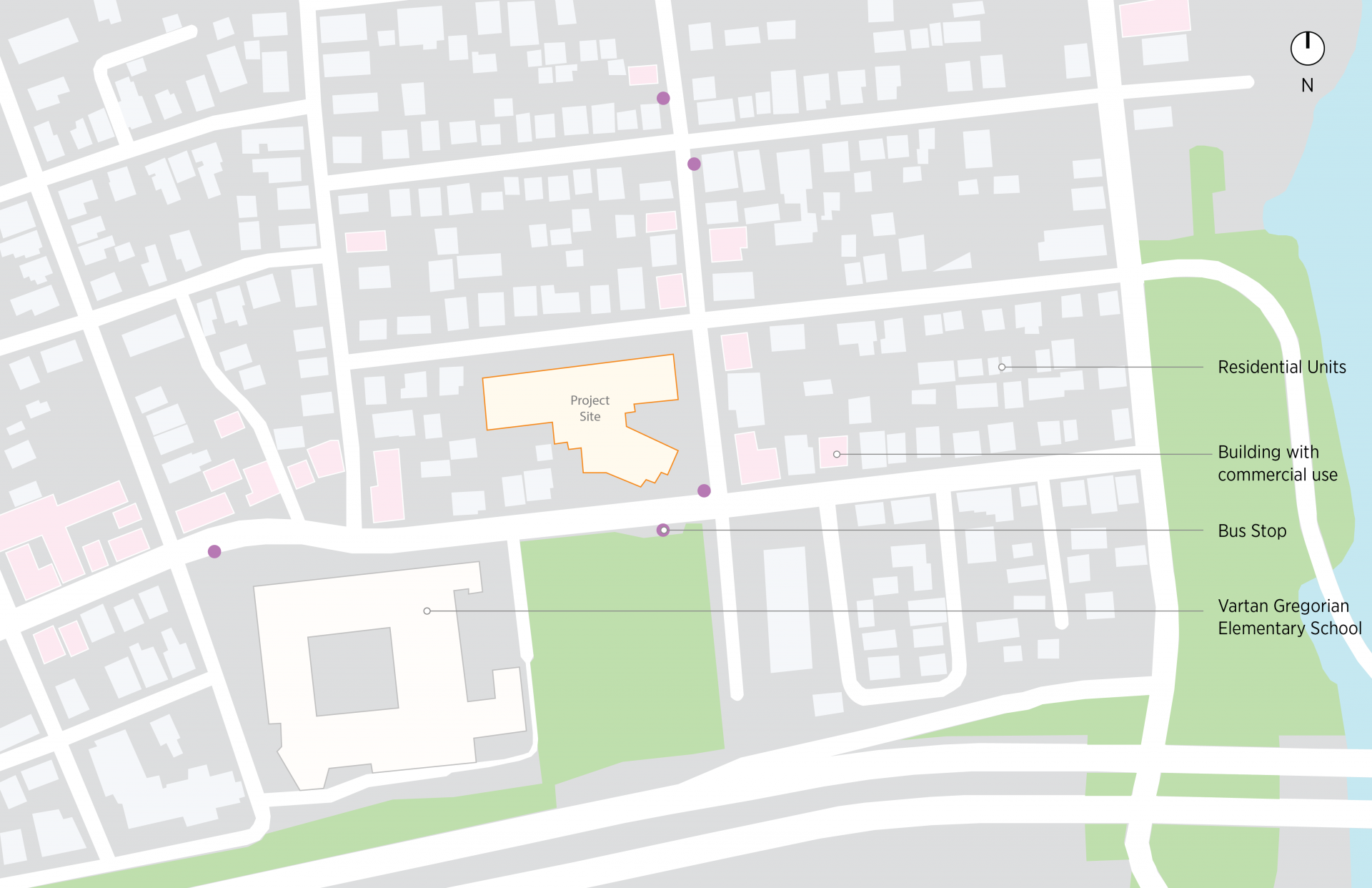
The thesis site locates in a quiet neighborhood of Providence -- the Fox Point Neighborhood. Around the site, almost 90% of the surrounding buildings are residential townhouses, with few having commercial areas on the ground level.
There are two big public facilities in this area: the fox point neighborhood center (thesis site) and the Vartan Gregorian Elementary School. They are across the street to each other, with some collaborative programs forming connections between those two facilities.
The transportation is very convenience at the site. The 94 bus have stops right in front of the site, which takes people to east-side market place as well as Kennedy Plaza, which is the transition hub located downtown Providence.
Existing Building
Existing Building Characteristics:
- Brick structure
- Five building blocks with different heights
- Regular shapes with one piece rotated about 45 degree
- All building blocks built at same time
Positive:
- Building height well fits into the neighborhood
- Courtyard provides a nice space to hang out
Negative:
- Lack of communication from the pedestrian
- No windows all the way around, lack of access to natural light
- Library sits in lower level, hard to find and access
- Lack of communication between lower level and the rest of the building (completely separated with two entrances)
- Hard fences at the side and back of the building, sense of distance
Image
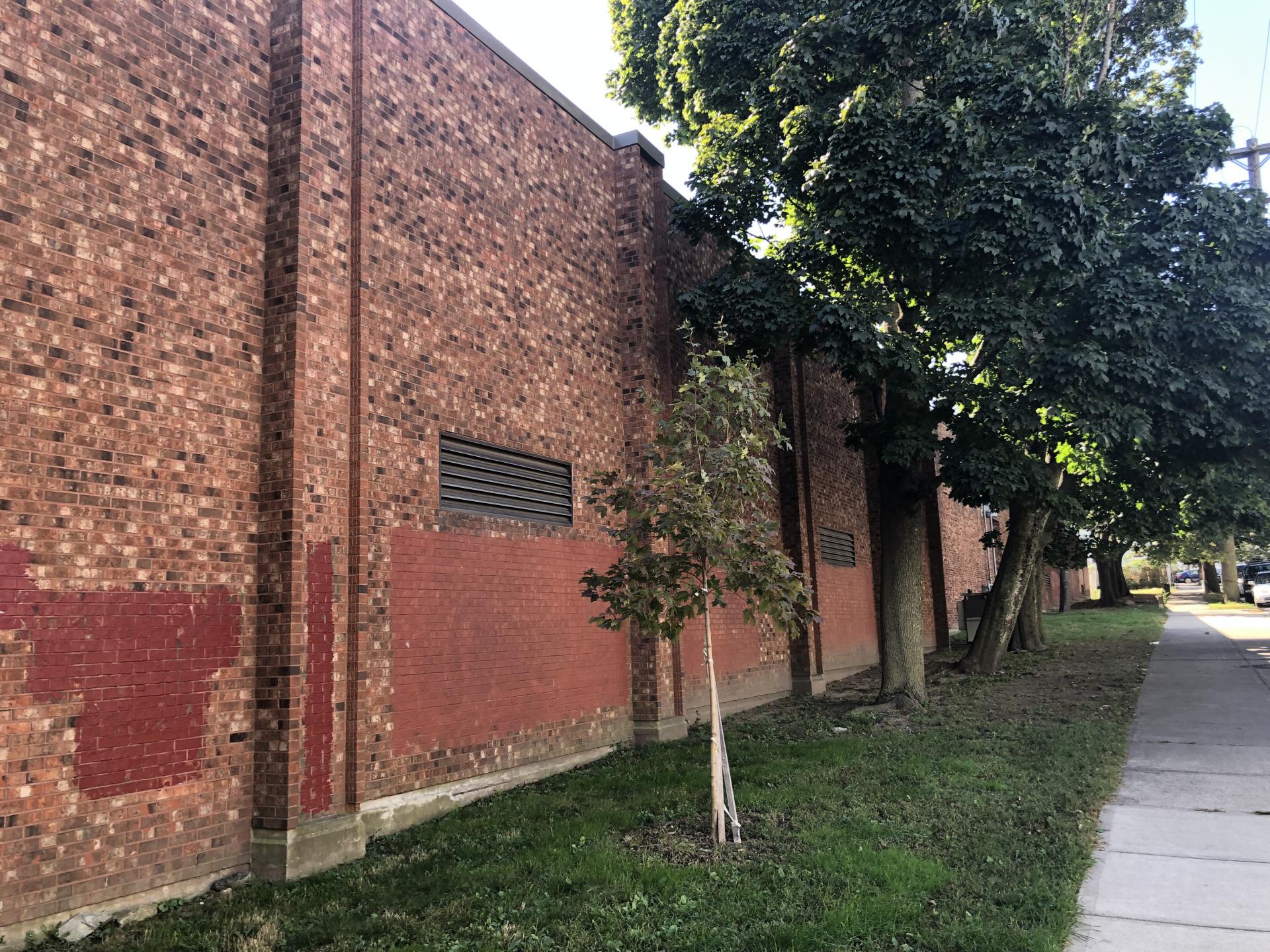
Image

Image
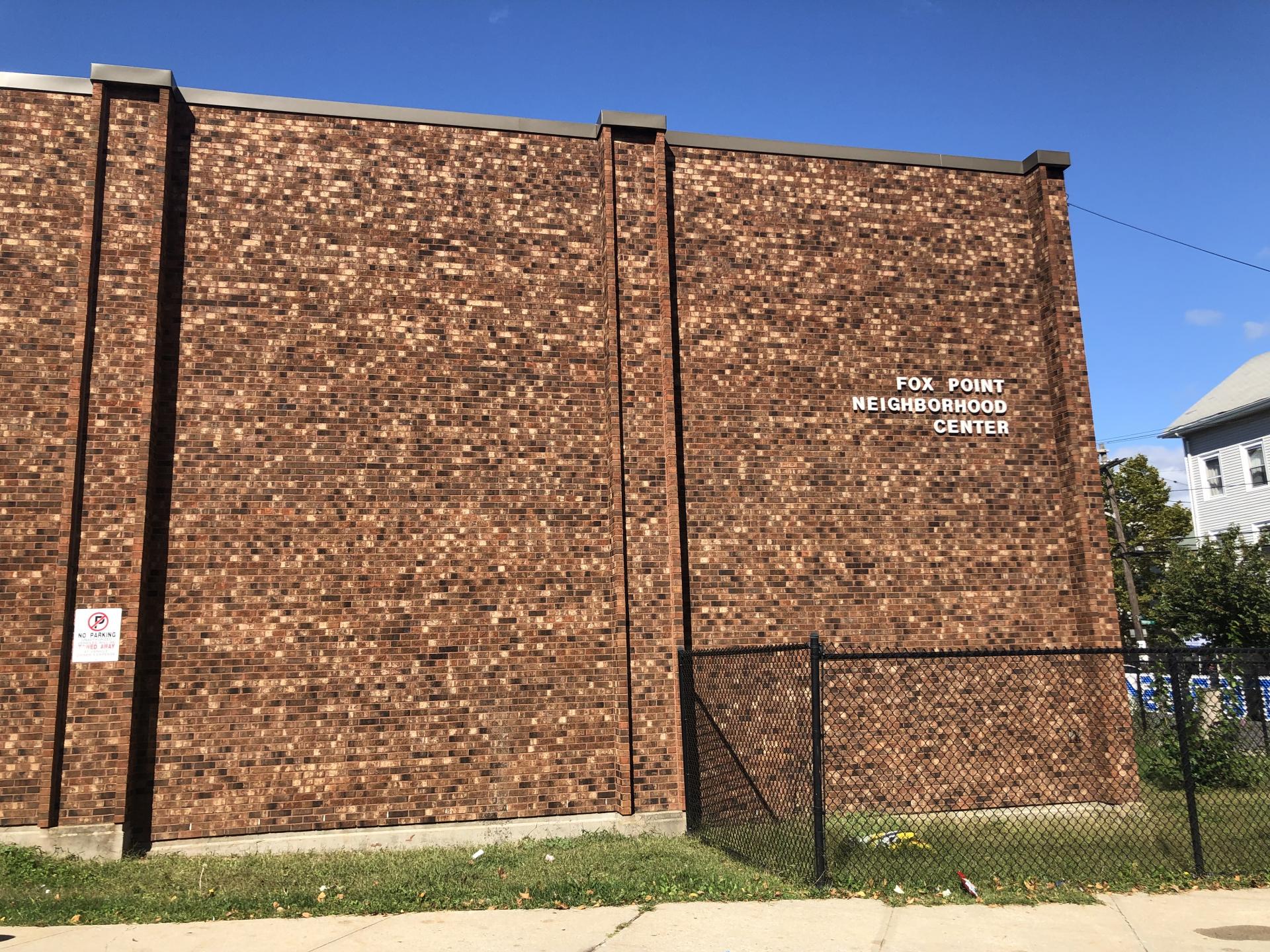
Image
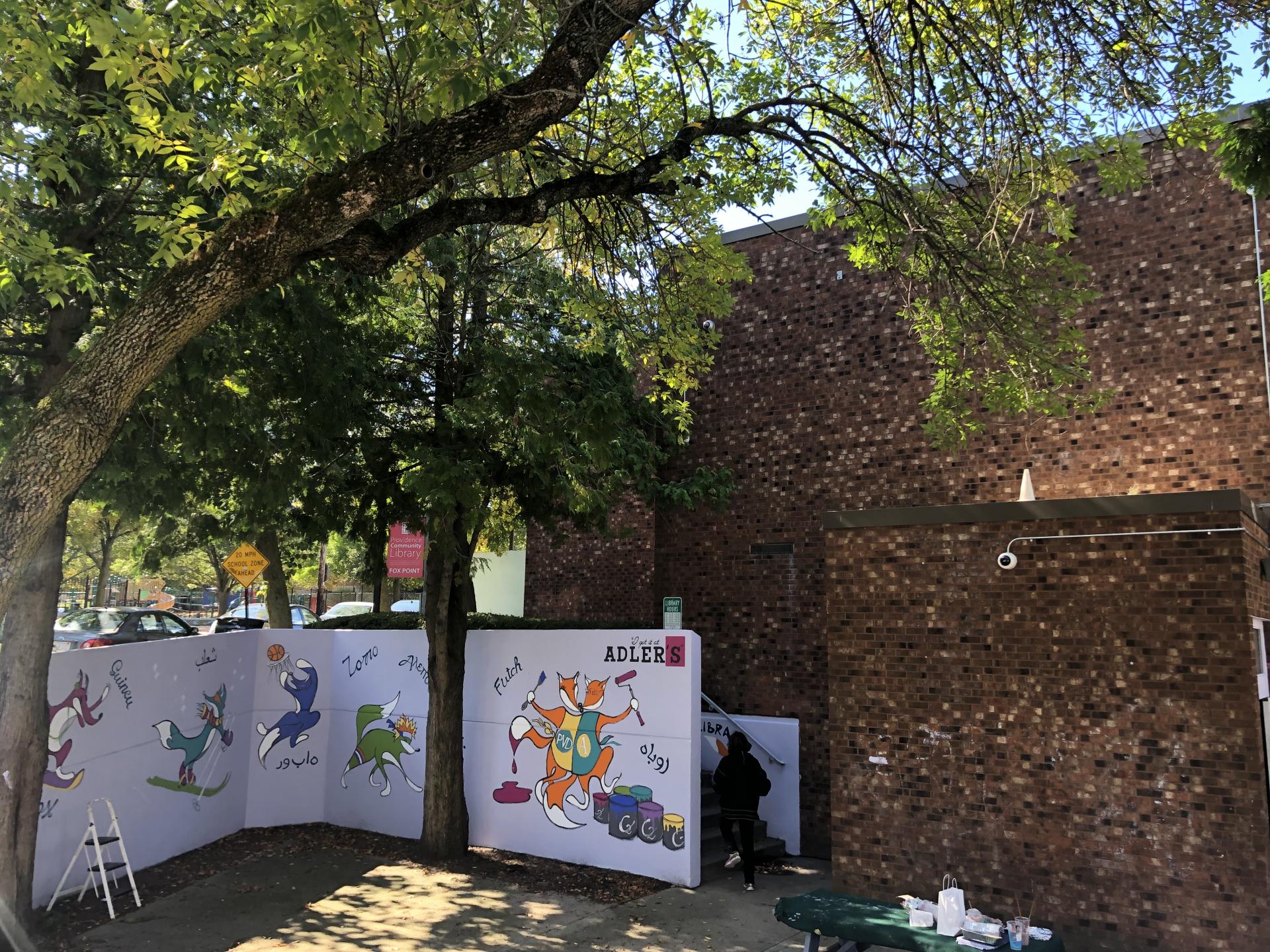
Image
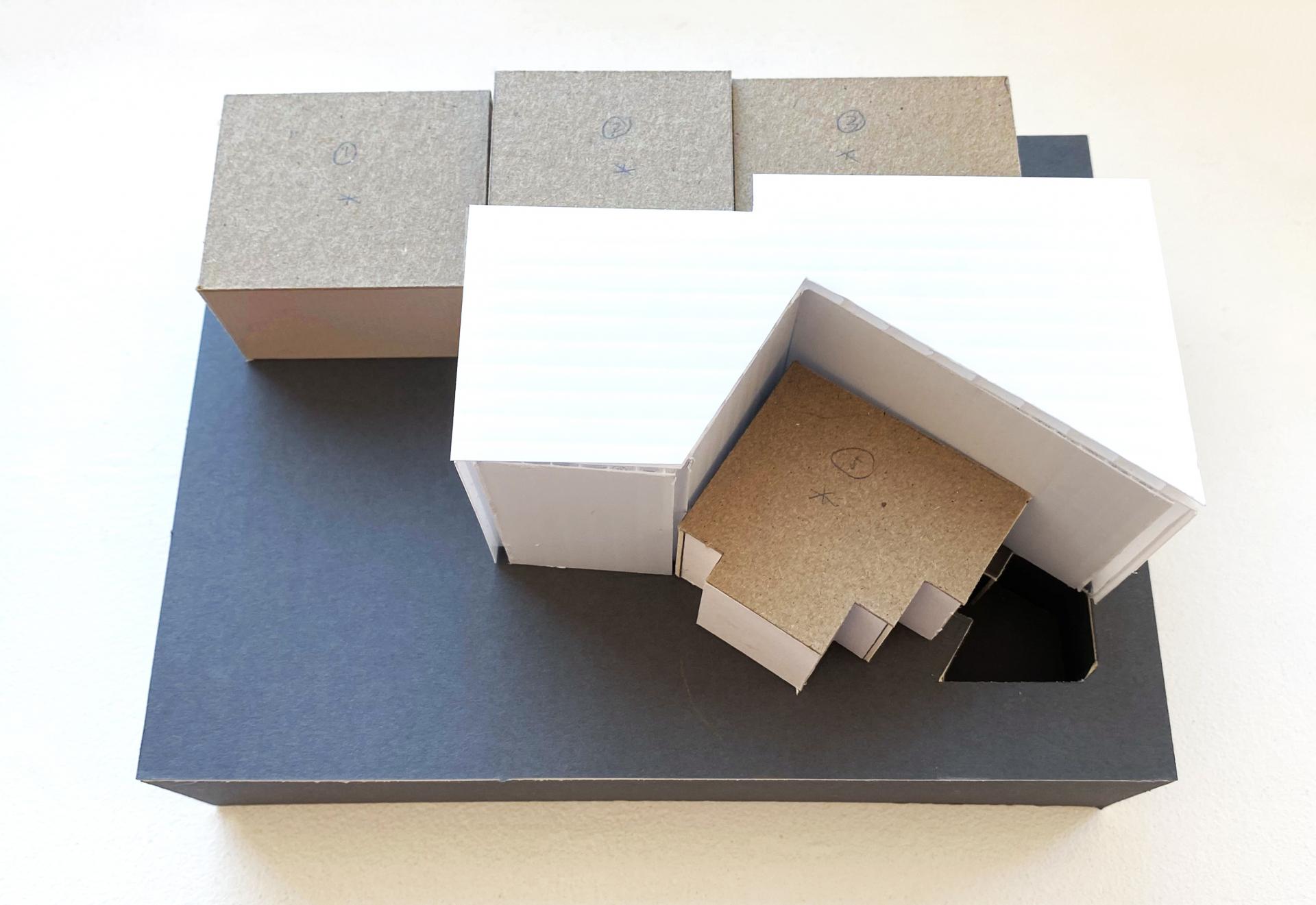
Image
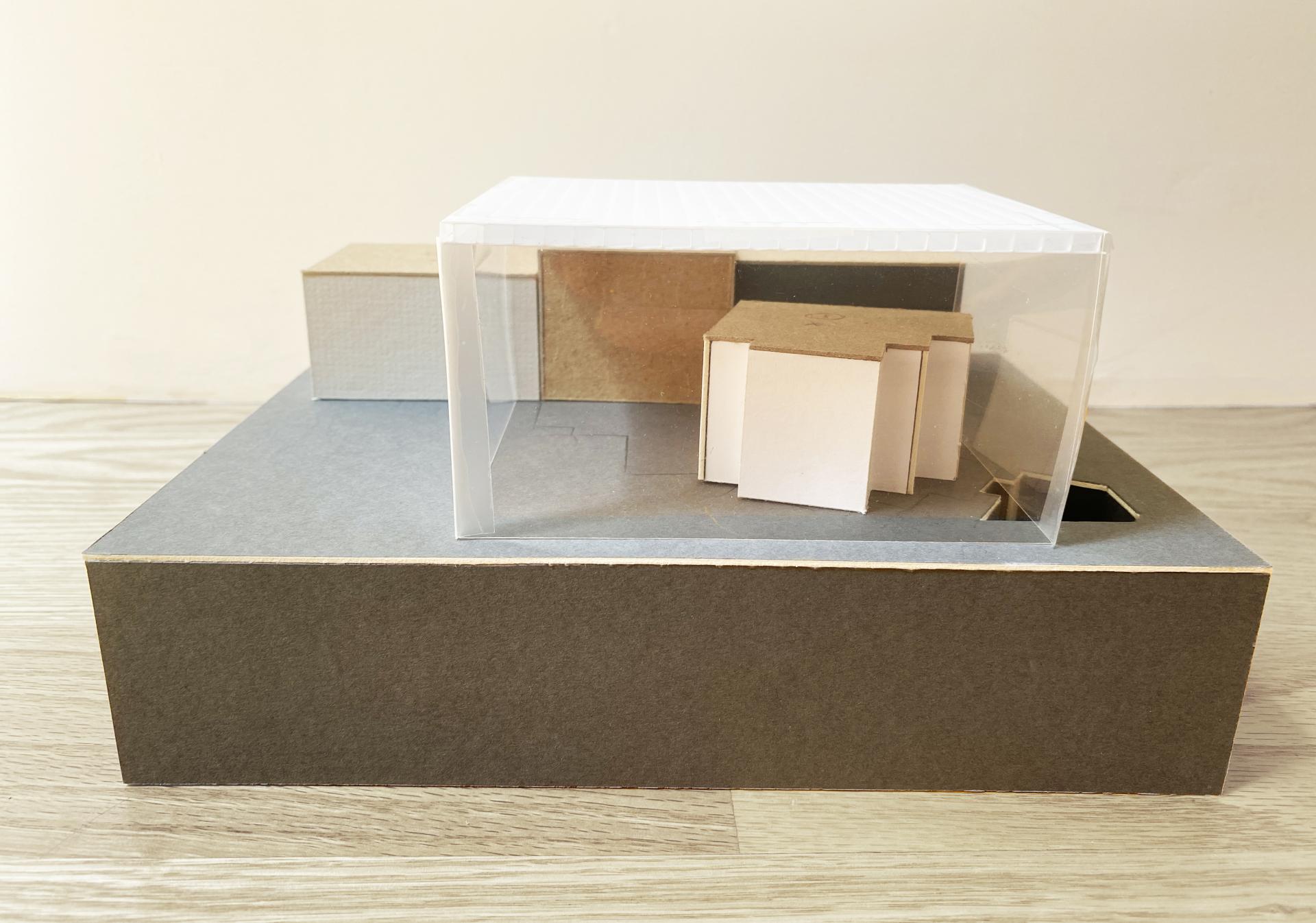
Concept Models
The most urgent problem that needs to be solved is to improve the building’s relationship with the street. The existing structure has the entrance hidden and set back. As a library, the building should not give a feeling of isolation. Instead, it should create a welcoming environment, drawing people into the space. The building should also have a strong visual connection with the street so that it can promote its existence.
These concept models explores different possibilities to extend the building back to the street but at the same time keeping its original building characteristics. Different building materials were represented by different model making materials. The existing building blocks were represented by solid chipboard, where they will remain solid with the original brick structure. For the new facade, it is explored with different shapes as well as building materials. (transparent verses translucent)
Among those explorations, the rectangular addition seems to work best. This proposal maximizes the portion of facade to be against the pedestrian within the property line, and at the same time rejoins different pieces of the building left. With everything else lined up regularly, the rotated piece is emphasized in this case, highlighting its specialness and importance.
Reuse Attitude: Form Follows Function
Image
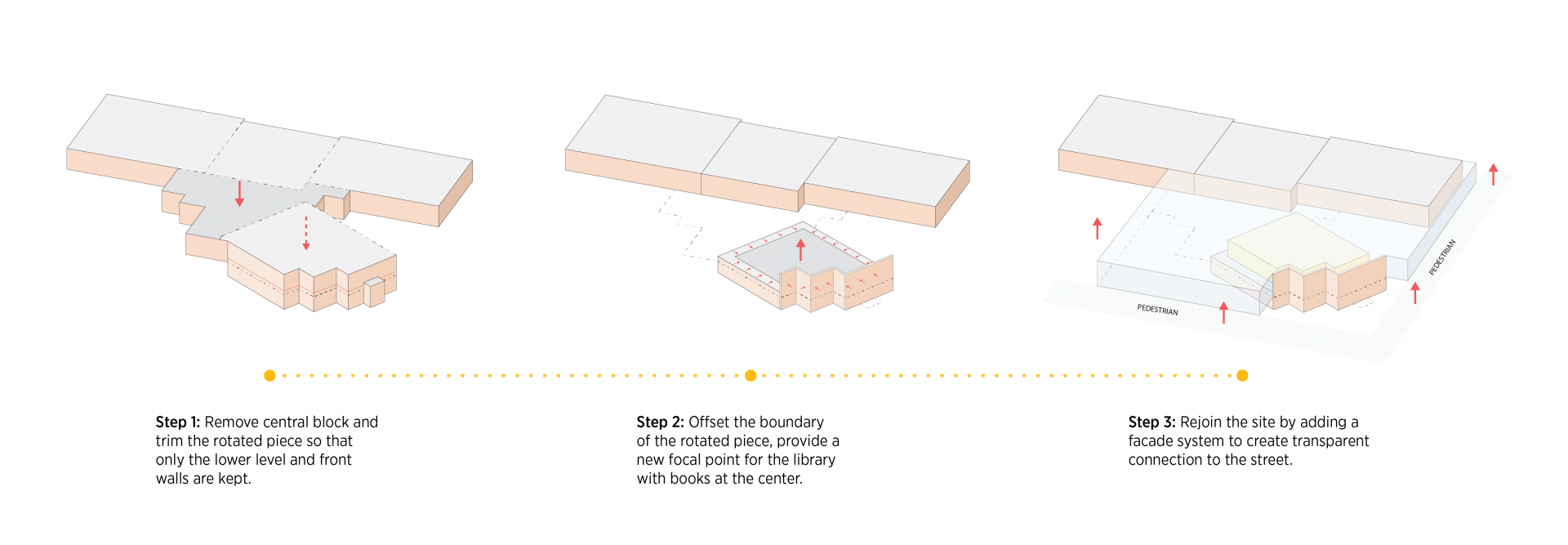
What Building Characteristics should a Library have?
- Access to natural light and visual communication from the street
- Big open spaces for easy supervision
- Welcoming and engaging spaces that encourage reading
- Hierarchy for books to emphasize the importance of physical collections
Idea of Book Mountain
Image

Why I call it “Book Mountain”?
- Structure with large scale and volume - Mountain
- Filled with physical books
- Symbolizes the amount of knowledge
- Elevates the reverence of books
Lower Level Plan
Image
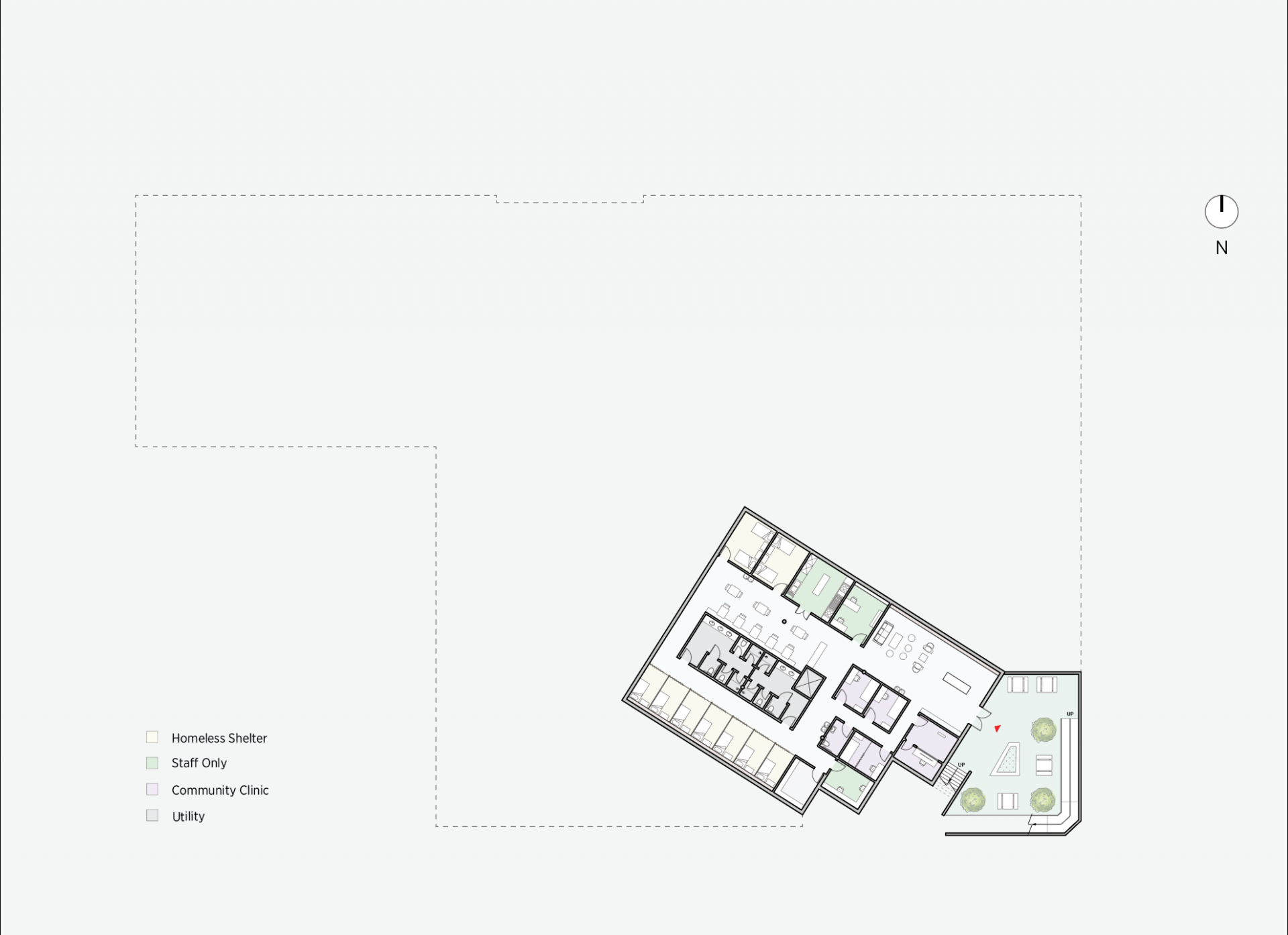
Ground Floor Plan
Image
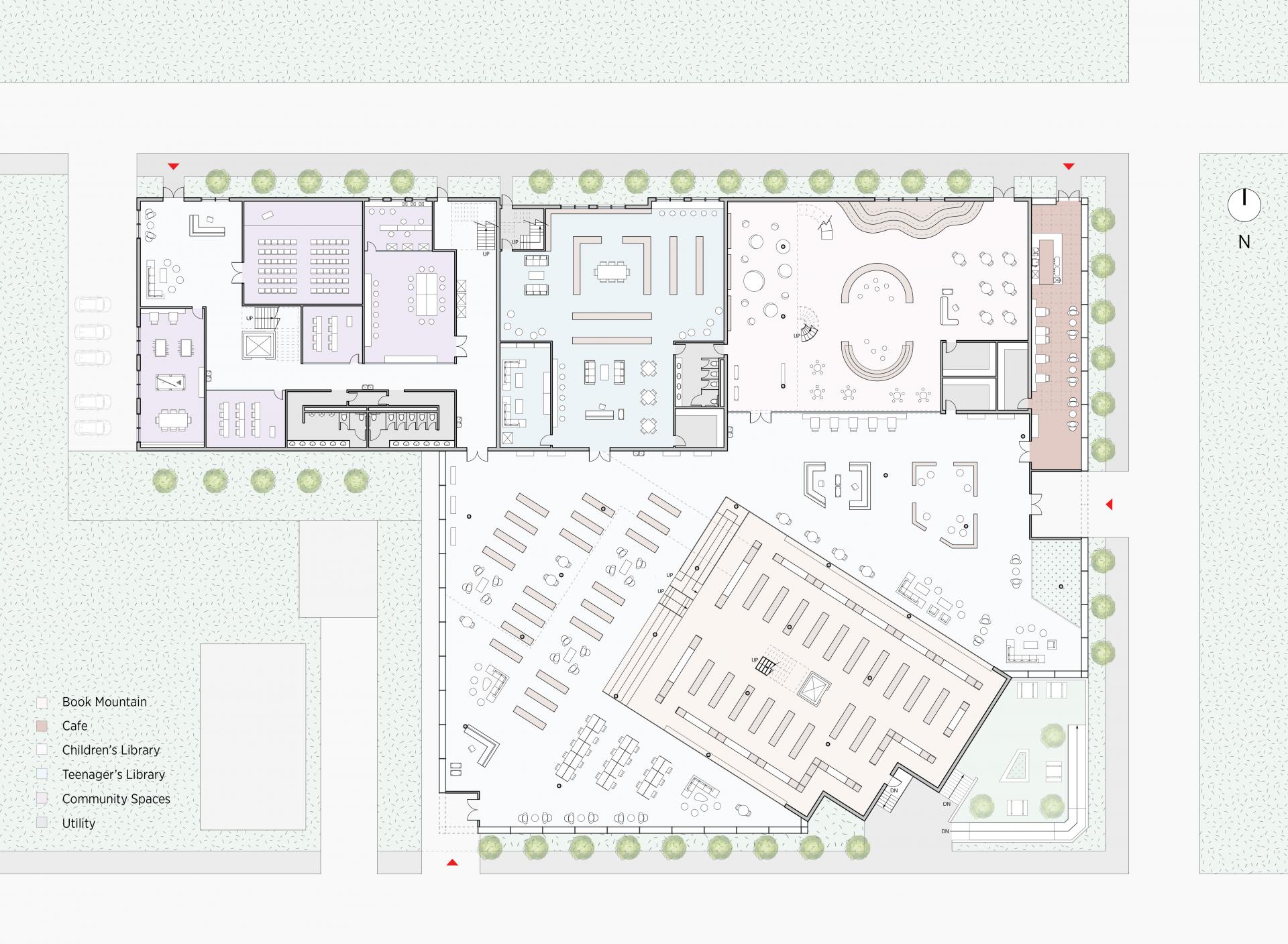
Second Floor Plan
Image
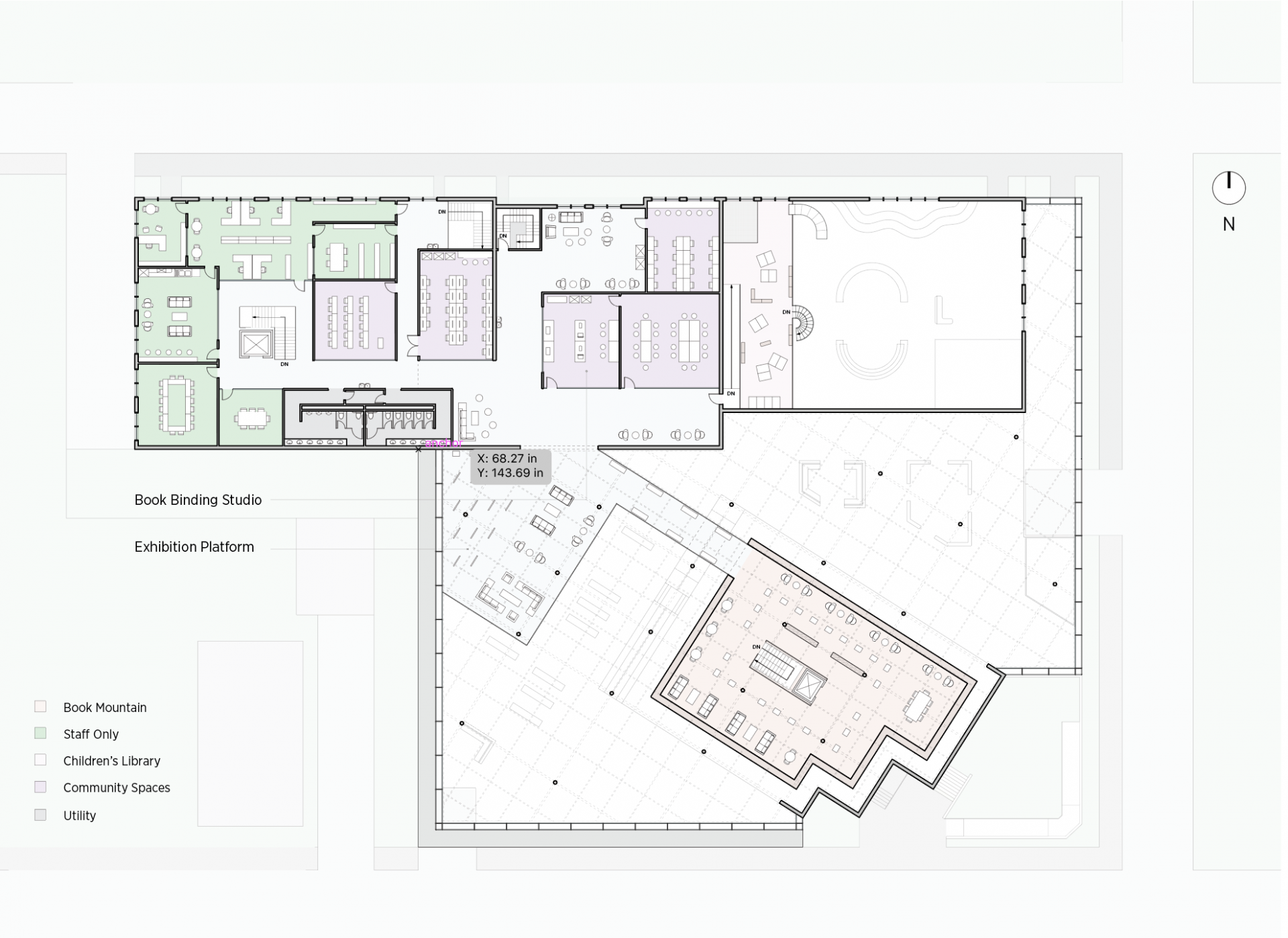
Long Section
Image

Different Experiences with Books
Image
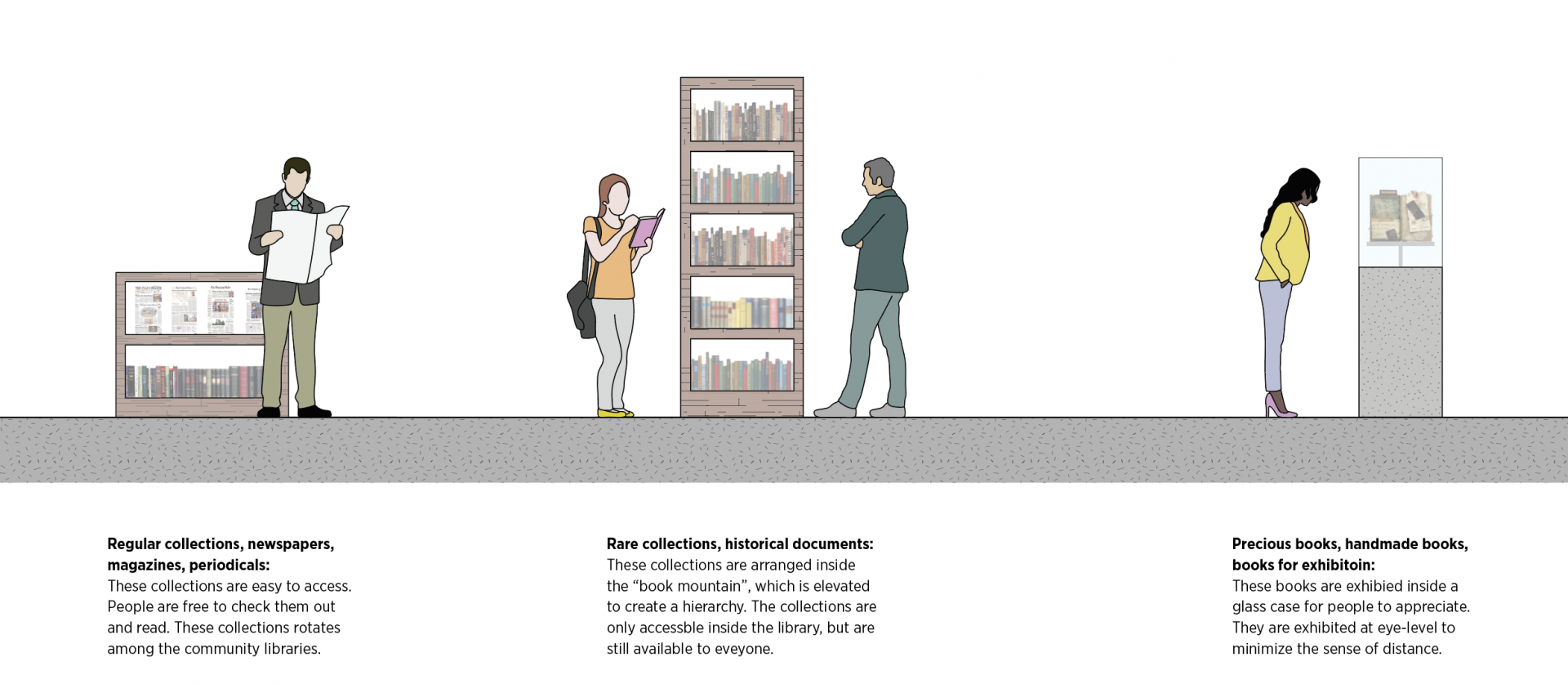
Detailed Section 1
Image
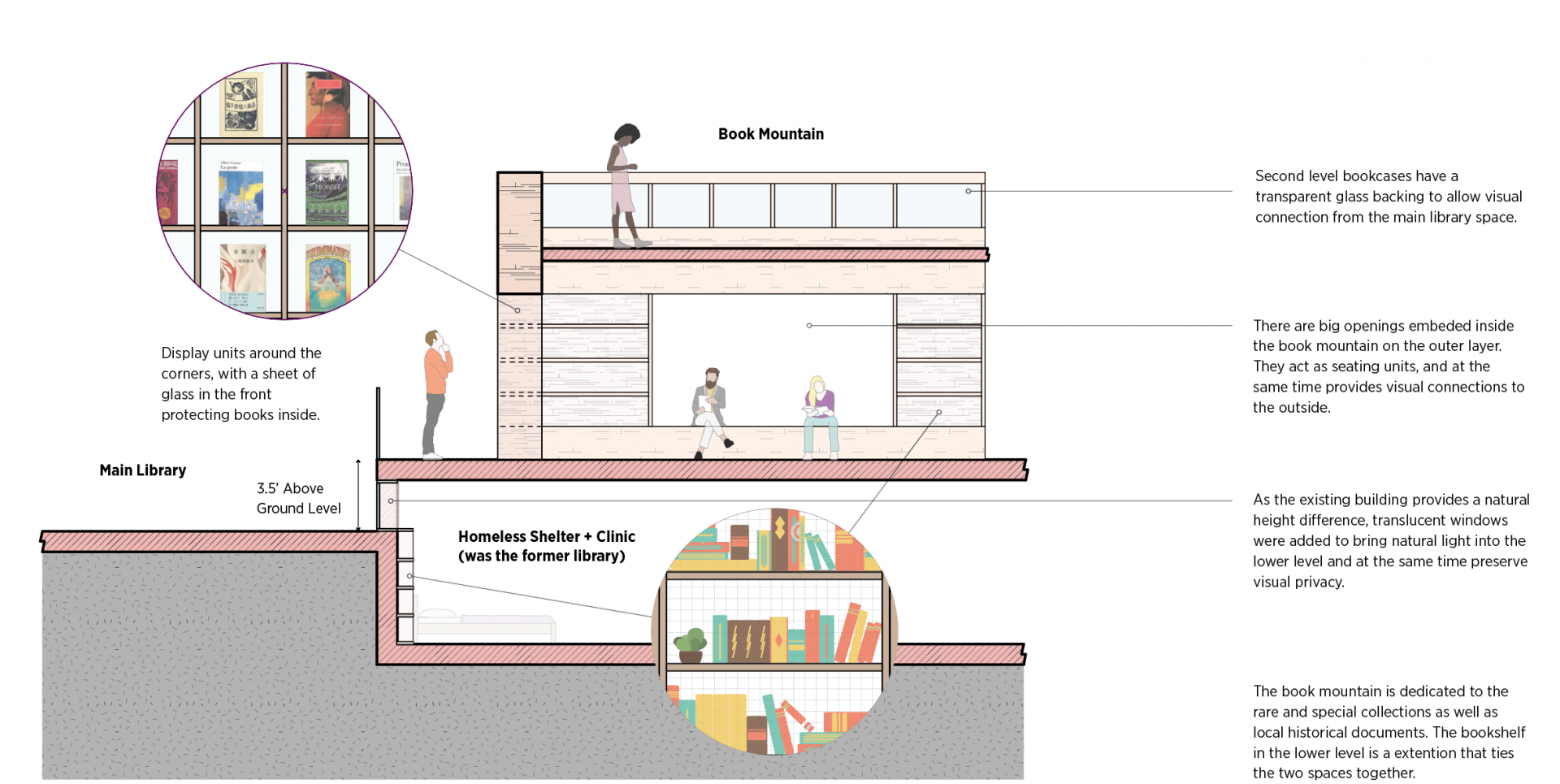
Detailed Section 2
Image

South Elevation
Image

Image
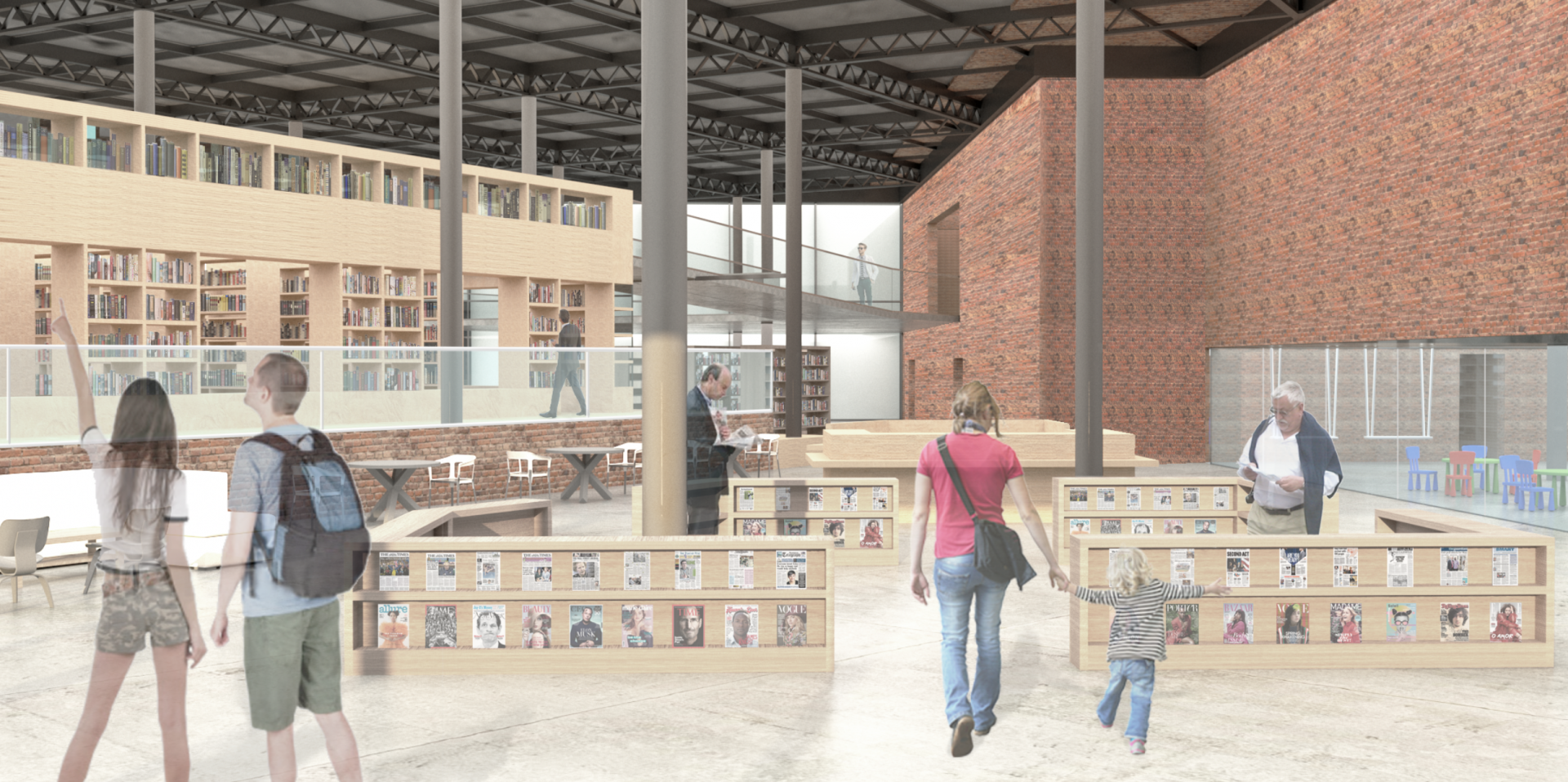
Image
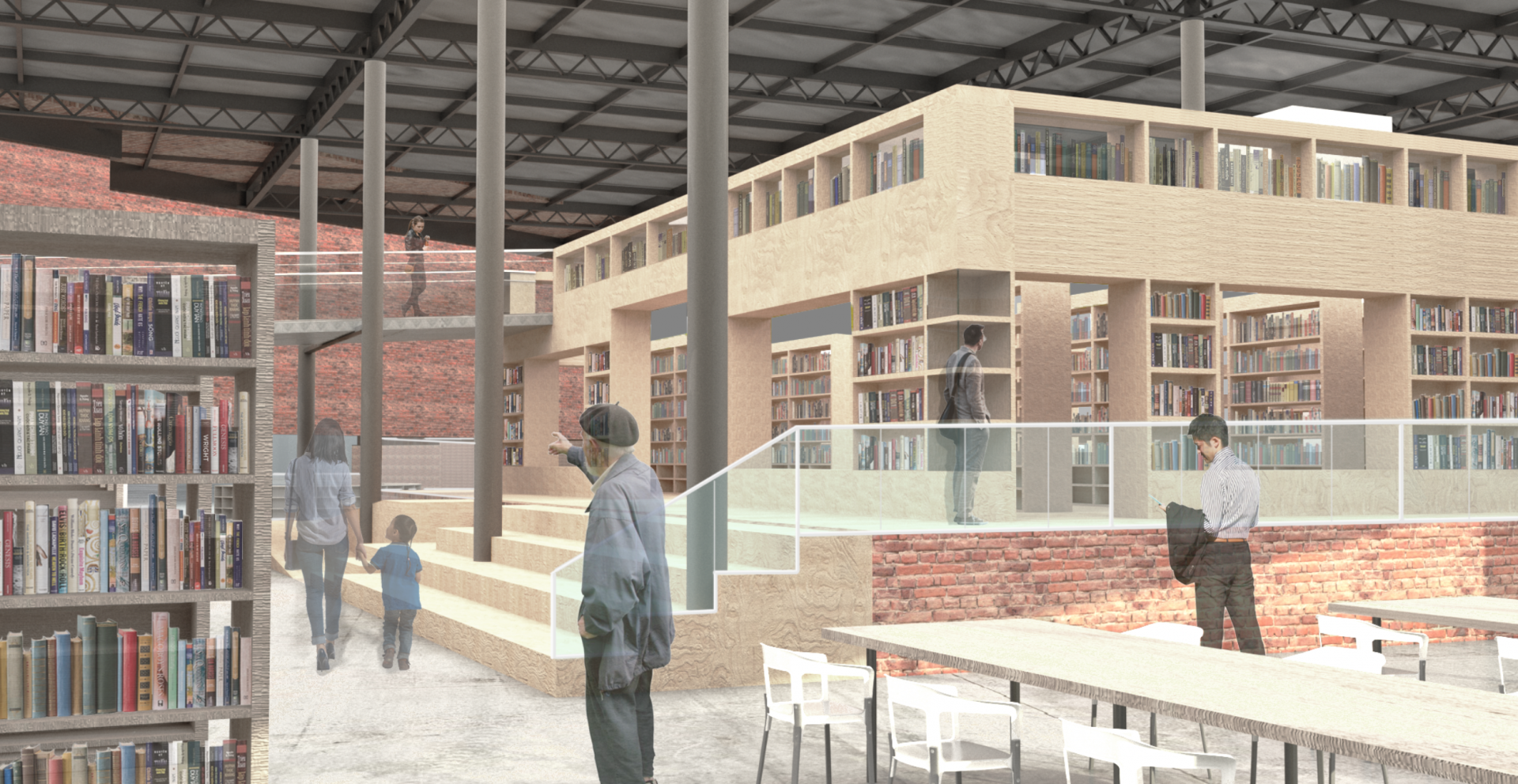
Image
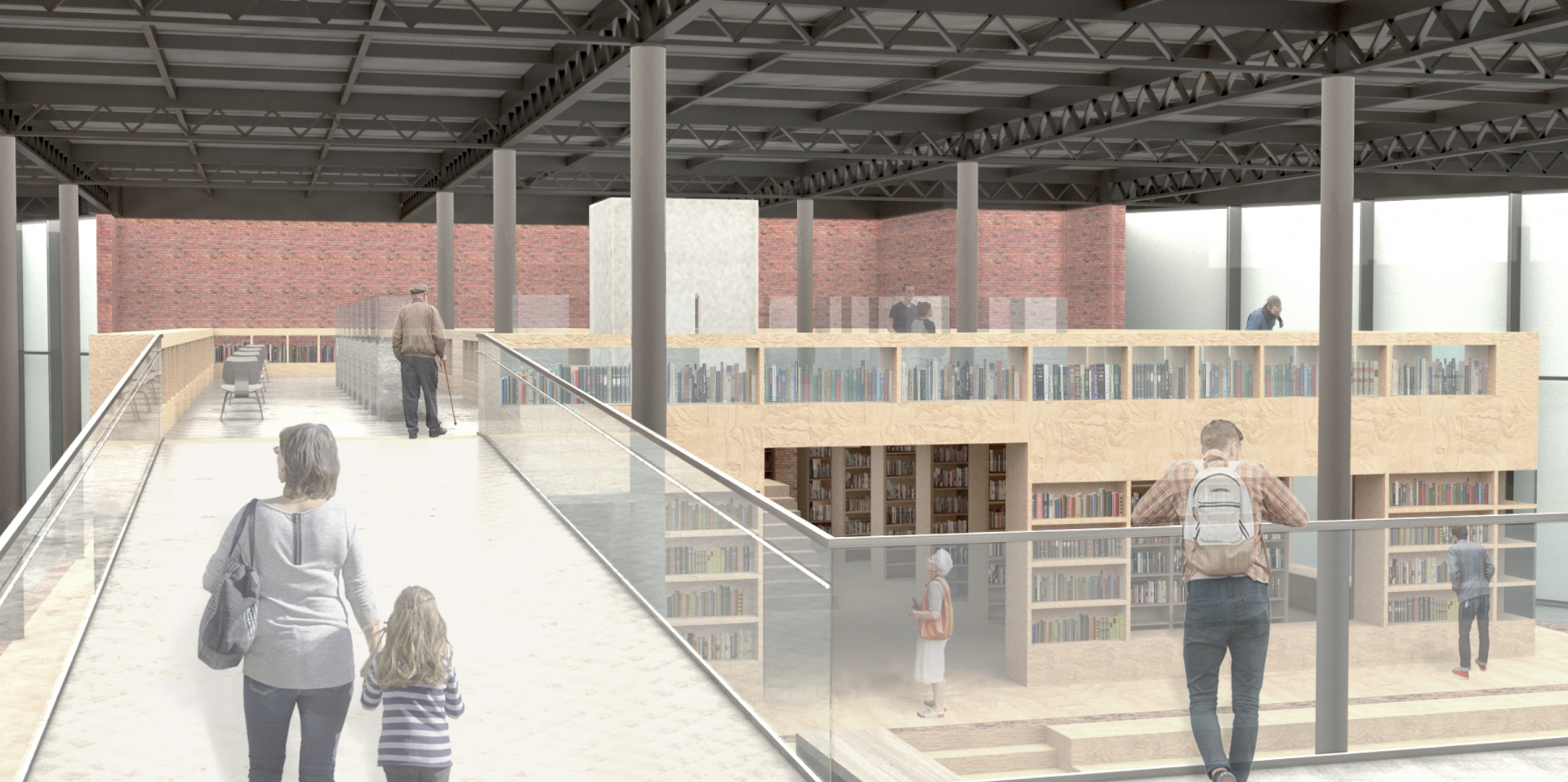
Elaine Wu
MDes Adaptive Reuse
+1 (312) 478-1257